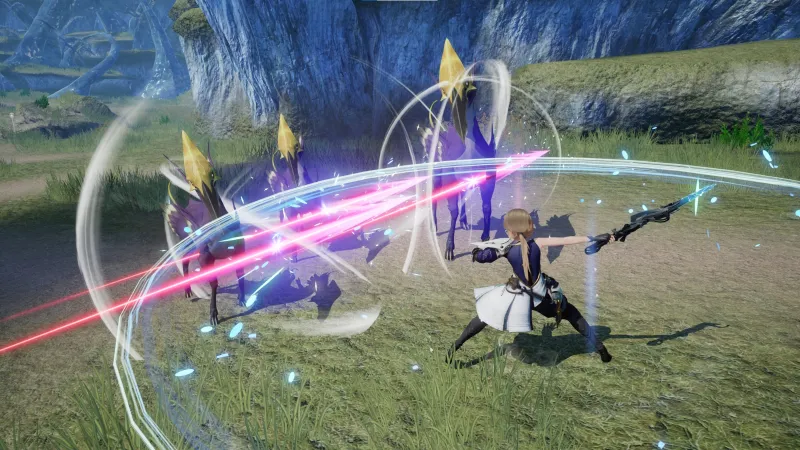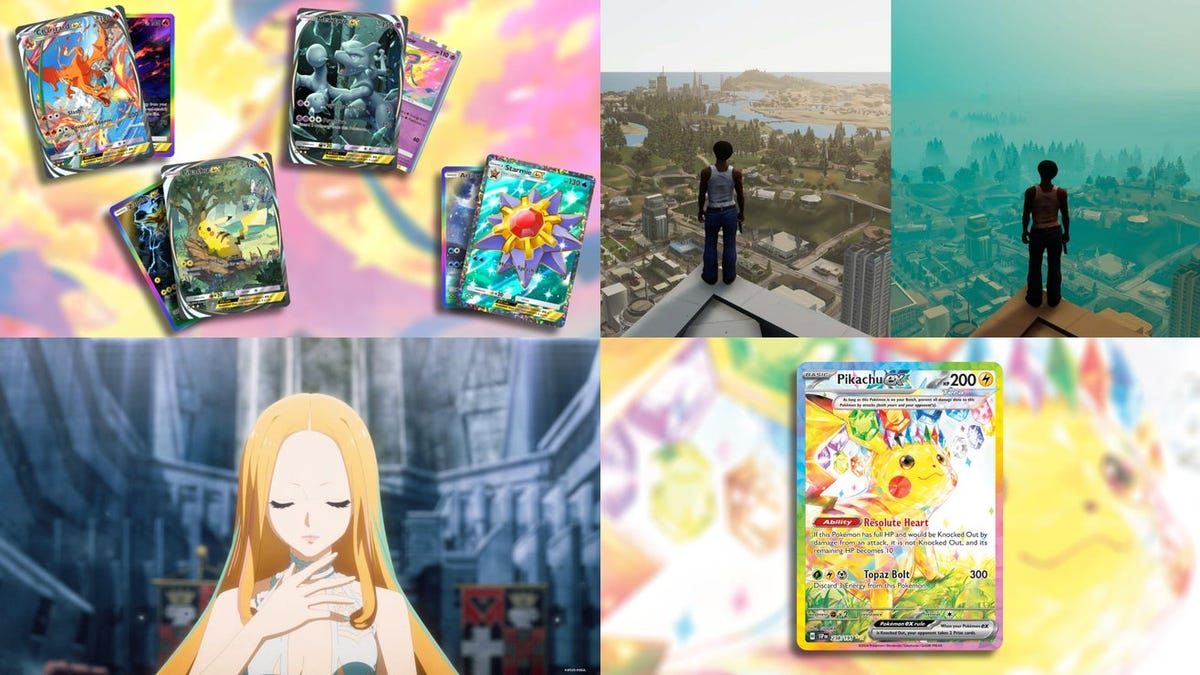Harvestella wants to be a jack of two trades, but ends up being a master of none. Part action RPG, part farming/life sim, this combination can be fun at times, but the two styles more often than not clash. The result is a sluggish grind that tends to repel fans of both genres rather than bring them together.
As an amnesiac warrior, you wake up on the outskirts of a quaint village, ignorant of your origins and purpose. Four powerful, monolithic crystals called Seaslight govern the scenic continent’s environmental stability, namely its seasons. However, between each of the four normal seasons, a deadly fifth season called the Quietus takes place, wiping out crops and endangering humans. This strange normality becomes unstable when the Seaslight begins behaving erratically, seemingly triggered by the mysterious arrival of Aria, a young scientist from the far future. Like you, Aria doesn’t know how she got here, so you band together to discover your respective origins while fighting a global crisis. Oh, and build a nice farm.
To his credit, the plot engages in its absurdity. In typical JRPG fashion, the mystery gradually becomes more grandiose and unhinged as it unfolds. While much of it is silly, I found little of it boring. A revelation made me laugh out loud at how bizarre it is, and I can’t help but respect Harvestella’s willingness to take some wild turns while throwing in a few poignant moments. A large group of likeable party members, such as a good-talking inventor, an AI-powered robot, and a talking unicorn join the main duo, but you spend most of your time with them one-on-one. As such, you don’t often see them all hanging out together, and when they do, the lack of group chemistry is striking and disappointing. It’s like inviting a bunch of good friends who know you but don’t know each other to hang out.
Harvestella encourages two styles of play, but feels like an action RPG first and then a farming game. Gameplay involves running through boring dungeons and chopping up enemies, collecting crafting materials and ingredients along the way. A robust job system offers a good variety of playstyles, but I only felt drawn to a few of them. Some of my favorites include the nimble, combo-centric Shadow Walker and the dancing Pilgrim-class floating blades. Other jobs, like the mechanic and the vocal-focused Woglinde, just aren’t fun, and the game rarely encouraged experimentation once I’d settled on my favorites. Even with classes and attacks I enjoyed, combat is mediocre and bosses are either weak or annoyingly cheap.
Farming fans won’t find much unique about Harvestella. You grow crops on fields that can be expanded several times, process food with machines, but only breed two types of animals. The farm changes with the seasons shifting every 30 days and certain foods can only grow at certain times of the year. Quietus, which only lasts a day, wipes out the crops, but I found this easy to plan, making it less menacing than probably intended.
Like combat, farming only feels passable, but is critical to success. Selling crops is one of the few ways to make money. You also need a full pantry to cook a variety of dishes. Eating keeps your stomach full, which in turn fills up your stamina bar. This gauge governs actions like farming, sprinting, and even performing special attacks. Eating also regenerates health, often in large quantities depending on the dish. However, you can’t eat when you’re full, which becomes an annoying obstacle in tough fights. Since there are no traditional healing potions, you will be making all of your recovery items yourself. That takes time, which translates into Harvestella’s biggest annoyance: the clock.

Harvestella works with an in-game day/night cycle that progresses in 10-minute increments faster than you might expect. Night starts at 6:00 p.m. and your character becomes sleepy by 10 a.m., slowing down their stamina recovery. So it’s important to return home to fall into your bed – and your bed only, as annoyingly you can’t sleep in the game’s various inns. If you stay outside after midnight, your hero will collapse from exhaustion and take him back home. Falling into exhaustion or death comes at the crushing price of paying an increasingly exorbitant doctor’s fee while clicking through the same non-skippable cutscene. It is an abominable punishment too severe for their own good.
Since you have to drop everything every night to get back home, progression becomes a massively slow grind. Dungeon crawling consists of moving forward before having to stop and continue the next day. Just reaching a location on the world map saps precious minutes until faster travel opportunities open up. Even after finding shortcuts and fast travel checkpoints, you’re still going through sections of a dungeon repeatedly until you reach uncharted territory. This will inevitably deplete your food supply, requiring you to set aside time to cook beforehand. Preparing meals takes up a significant portion of the day and limits time for adventure. When the cooking ingredients run out, more of them must be grown as only a handful of staples can be purchased. That means spending at least a couple of days waiting for the crops to replenish, then creating enough food to venture back into a dungeon and repeating the cycle over.
This framework effectively makes it impossible to advance the story for very long. There is often so much work that needs to be done beforehand that I have often been lucky enough to have enough daylight to pursue my desired missions. This frustrated me the most when the plot took an interesting turn and I wanted to see what came next. It’s a terrible form of gating as progress is hampered no matter how powerful or well equipped I was. In some cases it can take days of work and preparation to complete a single dungeon floor.
If I haven’t had enough time during the day to complete a story mission, Harvestella admirably offers plenty to do outside of the main narrative and farming. Plenty of multi-chapter side quests await you, although most of them involve reading lengthy conversations, completing a simple combat encounter, or running tedious errands. Despite some interesting stories, these missions aren’t great, but the game makes them worth completing, for better or for worse. Side missions offer tons of cash, important recipes, blueprints, and seeds. To my chagrin, completing as many as possible has become a necessary evil. I preferred the group bonding missions, where I learned about my teammates’ problems by helping them through unique storylines. Those quests were at least more interesting and rewarded me with improved physical perks, such as: B. increased strength, defense, etc., which practically made them necessary to play.
While it runs well, Harvestella also suffers from graphical glitches that make it feel unstable at times. In particular, a weird bug where half the screen would occasionally flicker in one color, whether docked or in handheld mode. The game doesn’t look good on the big screen either, due to its textures and low-resolution models.
Harvestella’s systems are brought together in a way that forces you to engage with almost everything it offers, whether you like it or not. But these slice-of-life activities are mundane and prevent you from enjoying the RPG elements on your own terms. Maximizing a daily schedule is sometimes rewarding, but the sluggish pace makes it difficult to stay committed over the long term. Harvestella forces you to do a lot to achieve comparatively little. At 70-80 hours it’s one of the biggest challenges I’ve played in a while. That’s unfortunate, because the combat, story, and characters are decent enough that they would shine brighter in a more traditional RPG framework. As it stands, squeezing this fruit isn’t always worth the small amount of juice.








